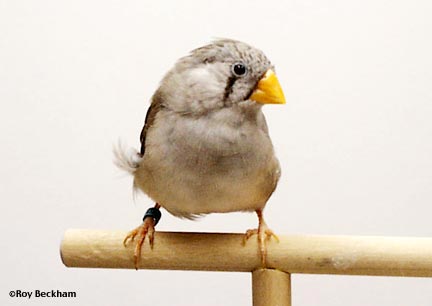




 |
|
|||||||||||||||||||||
 |
|
|
|
|
|
|
|
|
|
|||||||||||||
|
|
|
|
|
|
||||||||||||||||||
|
|
|
|
|
|
|
|
|
|
||||||||||||||
|
|
|
|
|
|
||||||||||||||||||
|
|
|
|
|
|
|
|
|
|
||||||||||||||
|
|
|
|
|
|
||||||||||||||||||
|
|
|
|
|
|
|
 |
|
|||||||||||||||
 |
 |
|
||||||||||||||||||||
|
|
|
|
||||||||||||||||||||
|
|
|
|
|
|
|
|
|
|
|
|
|
|
|
|
|
|
|
|
|
|
|
|
| Yellow Beak Zebra Finch | |||||
 |
|||||
| Yellow Beak Chestnut Flanked White female | |||||
|
Mutation Effects Male and Female: The color of the beak is changed from the normal orange/red to a light orange to yellow. Males still have more red than the females. The legs and feet are also of a lighter color approaching yellow. This change is usually not as dramatic as the change in beak color. Fledgling: Young Yellow Beaks look like regular beak finches, whether the normal color of the fledglings beak is black or horn or pink. As the beak begins to change color, you can see the lighter color showing through. Because the color of the legs and feet can vary with fledglings, this is not a reliable indicator of YB fledglings. Identifying Splits Combinations Notes It seems that the lightest yellow can be achieved with YB x YB, or YB x split YB matings rather than split YB x split YB matings. The hens are usually more attractive since their beaks are lighter in color and can truly be yellow. The male's beak will always look a little orange. |

Black Face Yellow Beak female
